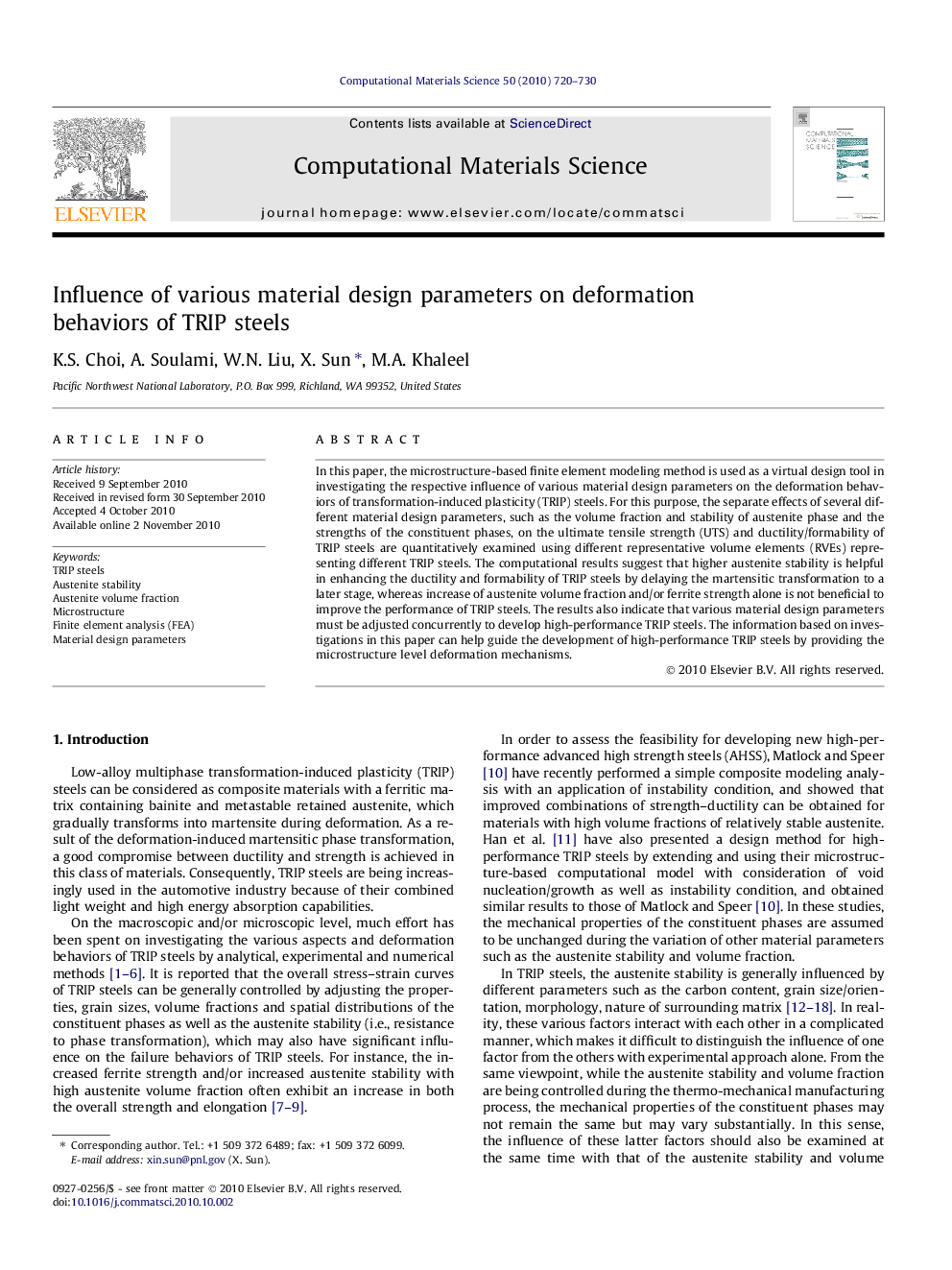| Article ID | Journal | Published Year | Pages | File Type |
|---|---|---|---|---|
| 1562865 | Computational Materials Science | 2010 | 11 Pages |
In this paper, the microstructure-based finite element modeling method is used as a virtual design tool in investigating the respective influence of various material design parameters on the deformation behaviors of transformation-induced plasticity (TRIP) steels. For this purpose, the separate effects of several different material design parameters, such as the volume fraction and stability of austenite phase and the strengths of the constituent phases, on the ultimate tensile strength (UTS) and ductility/formability of TRIP steels are quantitatively examined using different representative volume elements (RVEs) representing different TRIP steels. The computational results suggest that higher austenite stability is helpful in enhancing the ductility and formability of TRIP steels by delaying the martensitic transformation to a later stage, whereas increase of austenite volume fraction and/or ferrite strength alone is not beneficial to improve the performance of TRIP steels. The results also indicate that various material design parameters must be adjusted concurrently to develop high-performance TRIP steels. The information based on investigations in this paper can help guide the development of high-performance TRIP steels by providing the microstructure level deformation mechanisms.
